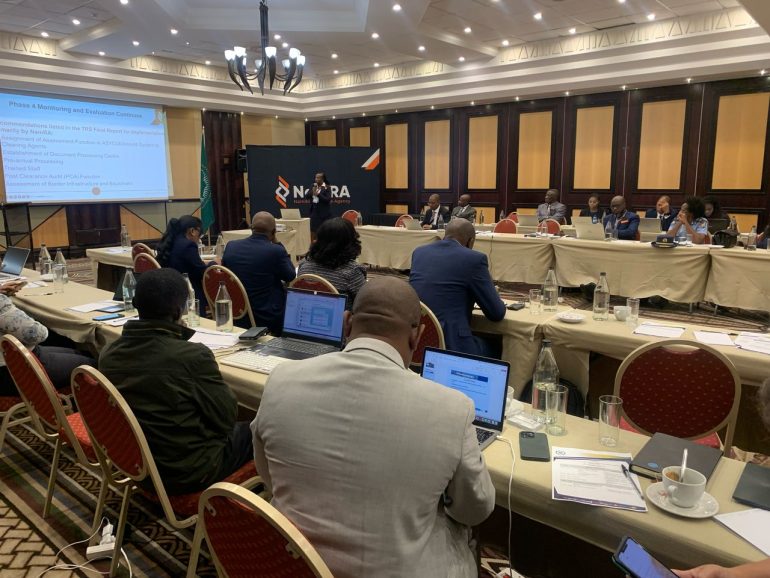Omanyano ovanhu koikundaneki yomalungula kashili paveta, Commisiner Sakaria takunghilile
Veronika Haulenga
Omanyano ovanhu koikundaneki yomalungula kashili paveta, Commisiner Sakaria takunghilile
Veronika Haulenga
Listeners:
Top listeners:
-
play_arrow
Omanyano ovanhu koikundaneki yomalungula kashili paveta, Commisiner Sakaria takunghilile Veronika Haulenga
07 March 2024 Morning Biz News: Namibia’s Oshikoto Region Receives Boost with N$400 Million Investment in Otjikoto Biomass Power Station


In a strategic move to combat energy supply shortages in the Oshikoto Region, the Namibian government has allocated a budget of N$400 million for the development of the 40-megawatt Otjikoto Biomass Power Station, located on the outskirts of Tsumeb. The announcement came from the Minister of Finance and Public Enterprises, Iipumbu Shiimi, emphasizing the government’s commitment to enhancing the region’s energy infrastructure.
The Otjikoto Biomass Power Station is poised to play a pivotal role in meeting the growing energy demands of the region. This investment aligns with the government’s broader agenda to address energy challenges and stimulate economic growth. The initiative holds promise not only in providing a reliable power source but also in creating job opportunities and fostering sustainable development in the Oshikoto Region.
As the Namibian government takes proactive steps to strengthen the energy sector, the investment in Otjikoto Biomass Power Station reflects a forward-looking approach to overcoming infrastructure hurdles. The infusion of N$400 million underscores the government’s dedication to improving the lives of citizens by ensuring a stable and sufficient energy supply.
Meanwhile, South Africa faces a decline in business confidence during the first quarter of 2024, attributed to ongoing challenges such as load shedding, port congestion, and inflation. The business confidence index, compiled by the Bureau for Economic Research and conducted by the Rand Merchant Bank, dropped from 31 points in the previous quarter to 30 points. These challenges pose obstacles to South Africa’s economic stability, highlighting the need for comprehensive solutions to boost business sentiment.
On the global economic front, oil prices experienced a modest uptick on Thursday, driven by a report revealing that U.S. crude inventories increased less than anticipated last week, coupled with significant draws in fuel stocks. Brent crude futures rose by 15 cents, reaching $83.11 per barrel, while U.S. West Texas Intermediate crude futures increased by 18 cents per barrel. These developments underscore the delicate balance in the global oil market, influenced by both supply and demand factors.
In the currency markets, the yen surged to a one-month high against the dollar on Thursday, fueled by speculation that the Bank of Japan might terminate negative interest rates later this month. Simultaneously, expectations of imminent U.S. rate cuts added downward pressure on the U.S. currency. The Japanese yen experienced a notable rally, surpassing a 0.5% increase to reach 148.56 per dollar, while also making gains against the euro and the Australian dollar.
Now, let’s take a look at the latest financial indicators:
- Namibia dollar trades at 18.84 to the US$
- Namibia dollar to Euro: 20.52
- Namibia dollar to Pound: 23.99
- Gold is trading at $2,145.64 per fine ounce
- Brent crude stands at $82.04 per barrel
- 1 Bitcoin costs $1,246,123.60
These financial indicators provide a snapshot of the current economic landscape, reflecting the dynamic nature of global markets and the interplay of various factors shaping the financial environment. As governments and businesses navigate challenges, strategic investments and proactive measures are crucial for fostering resilience and sustainable development.
Written by: Leonard Witbeen
bitcoin Economy Finance FUTURE MEDIA NAMIBIA FUTURE MEDIA NEWS leonard witbeen Nasdaq NYSE
Similar posts
Windhoek Weather
Most popular

Namdia Heist: More questions, lots of confusion

Omuhwahwameki Michael okuunganeka oshikonga shoku patitha oostola dho Rani moshilongo ashihe.

Walvis Bay woman loses over N$777.000 to a fraudster

Don’t let Pohamba’s tears over Nujoma’s death go to waste

Justice Served: Jandre Dippenaar Found Guilty of Six Murders in Swakopmund Court
Copyright 2025 Future Media (Pty) Ltd | Website by Digital Platforms
Tel: +264 83 000 1000 | Email: news@futuremedia.com.na





